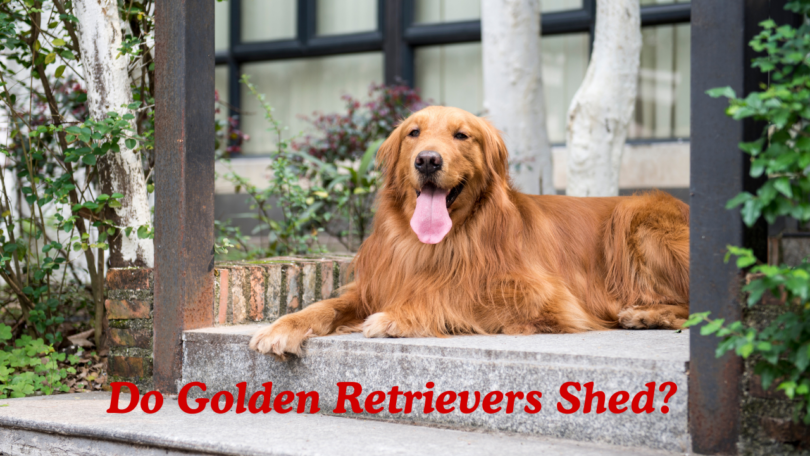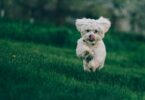What if one of the most beloved family pets could leave behind a furry trail in every room? For those considering welcoming a new companion, understanding shedding habits is crucial—especially when it comes to breeds known for their lush coats.
Golden Retrievers are adored for their loyal and affectionate nature. However, their double-layered fur requires consistent maintenance. The outer coat repels water, while the dense undercoat sheds seasonally, particularly in spring and fall. This natural process helps them adapt to temperature changes but can overwhelm unprepared owners.
Managing loose hair isn’t just about cleanliness—it’s vital for the dog’s health. Regular brushing removes dead fur and prevents matting. Tools like de-shedding combs or slicker brushes make this task easier. A balanced diet rich in omega fatty acids also supports skin and coat wellness, reducing excessive shedding.
This guide explores practical strategies to minimize hair around your home. From grooming routines to dietary tips, you’ll learn how to create a harmonious living space for both you and your pet. Let’s dive into the essentials of caring for a breed with such a iconic—and abundant—coat.
Understanding Golden Retriever Coats: Why Shedding Occurs
The secret behind a Golden Retriever’s shedding lies in their unique coat structure. Their fur isn’t just for looks—it’s a functional system designed for protection and adaptability. By learning how their coats work, owners can better manage loose hair and maintain a cleaner home.
The Role of the Double Coat
This breed’s double-layered fur includes a dense undercoat and a water-resistant top layer. The undercoat acts as insulation, trapping warmth in winter and blocking heat during summer. Meanwhile, the outer coat shields against dirt and moisture. Together, these layers keep the dog comfortable year-round.
Natural Shedding Cycles and Adaptations
Twice a year—typically in spring and fall—these dogs “blow” their undercoats to adapt to temperature shifts. This process releases clumps of dead fur, which can seem overwhelming but is entirely natural. Regular grooming during these periods helps control excess hair around the home. Tools like undercoat rakes efficiently remove loose strands without damaging the topcoat.
Understanding this cycle allows owners to anticipate heavy shedding phases. A consistent brushing routine not only reduces stray hairs but also promotes healthier skin and fur growth. Pairing proper care with seasonal adjustments ensures both pet and owner stay comfortable through every coat transition.
Do Golden Retrievers Shed and How Much to Expect
Every pet owner knows loose fur comes with the territory, but this breed’s hair loss patterns depend on multiple variables. Understanding these elements helps set practical expectations and craft effective care routines.
Factors Influencing Hair Loss
A retriever’s coat responds to genetics, health status, and environment. Some dogs inherit thicker undercoats, leading to more noticeable shedding. Skin allergies or hormonal imbalances can also increase hair loss. Indoor heating during winter or dry climates might trigger extra shedding as the coat adapts to temperature shifts.
Nutrition plays a key role too. A diet lacking omega-3 fatty acids or zinc often results in brittle fur and excessive shedding. High-quality food choices support skin health, reducing unnecessary hair drop. Regular vet checkups help identify food-related or medical issues early.
Seasonal Variations in Shedding
Twice yearly, retrievers undergo heavy shedding as their coats transition between seasons. Spring brings lighter fur for summer, while fall prepares them for winter insulation. During these periods, daily brushing becomes essential to manage loose strands.
Owners should note regional climate differences. Dogs in warmer states might shed moderately year-round compared to those in colder areas. Adjusting grooming frequency based on the time of year prevents fur overload in your home. Planning sessions around these cycles saves time and keeps coats healthy.
While no solution eliminates shedding entirely, consistent care minimizes its impact. Allocating time each week for brushing and vacuuming helps maintain balance. Recognizing these patterns allows owners to embrace their pet’s natural processes without stress.
The Science Behind Golden Retrievers’ Double Coat
Nature equips certain breeds with specialized fur systems that act like built-in climate control. The double coat—a hallmark of many working dogs—combines two distinct layers designed for survival and comfort. This biological marvel explains why some pets thrive in diverse weather conditions while others struggle.
Coat Layers Explained
The undercoat consists of soft, dense fur that traps air close to the skin. This layer thickens in winter and thins during summer, adapting to seasonal changes. Above it lies the outer coat—longer guard hairs that repel water, block UV rays, and shield against dirt. Together, they create a flexible barrier against environmental stressors.
Benefits of Insulation and Skin Protection
This dual-layer system regulates body temperature year-round. In cold climates, the undercoat prevents heat loss. During summer, airflow between the layers helps dissipate warmth. The outer coat also minimizes skin irritation from sun exposure or abrasive surfaces.
Variations in coat density across breeds affect shedding frequency. Thicker undercoats often mean more hair during seasonal transitions. While some shedding is normal, excessive hair loss might signal allergies or nutritional gaps. Regular brushing distributes natural oils and removes loose fur before it accumulates.
Maintaining skin health reduces irritation that could worsen shedding. Gentle grooming tools preserve both coat layers without causing damage. Understanding your pet’s unique fur structure makes it easier to choose effective care strategies tailored to their needs.
Effective Grooming Techniques to Manage Shedding
Keeping your home fur-free starts with mastering a few grooming essentials. Proper care not only reduces loose hair but also enhances your companion’s coat health. For medium- to long-haired breeds like retrievers, a structured routine ensures comfort and minimizes shedding surprises.
Daily Brushing and Professional Grooming Tips
Start with a pin brush to gently remove dead hair and detangle the topcoat. Follow with a slicker brush to catch loose undercoat strands. This daily process takes just 10 minutes but prevents mats and distributes natural oils for shine.
Professional groomers recommend scheduling appointments every 6–8 weeks. They use specialized tools like thinning scissors for tricky areas and high-quality shampoos to reduce static. These sessions address hard-to-reach spots and keep the coat manageable between visits.
Choosing the Right De-shedding Tools
Undercoat rakes work best during seasonal shedding phases. Their curved teeth lift dense fur without irritating the skin. For everyday use, a de-shedding glove or rubber brush collects loose hair while bonding with your pet.
Consistency is key. Pairing weekly baths with gentle brushing maintains skin health and reduces shedding over time. Combined with a balanced diet, these steps ensure your furry friend stays comfortable—and your home stays cleaner.
Nutrition and Health for a Healthy Coat
A dog’s coat often mirrors their internal health, making nutrition a cornerstone of fur management. What goes into their bowl directly impacts shine, texture, and shedding frequency. Pairing smart dietary choices with grooming creates a powerful defense against excessive hair loss.
Balanced Diet and Essential Supplements
High-quality protein supports hair follicles, while omega-3 fatty acids reduce skin inflammation. Foods rich in salmon, flaxseed, or chicken provide these nutrients naturally. Supplements like biotin and zinc boost oil production, preventing dryness that leads to brittle fur.
Many people overlook the role of vitamins. Vitamin E acts as an antioxidant, protecting skin cells from damage. Adding a fish oil capsule to meals three times a week offers an easy way to enhance coat health. Always consult your vet before introducing new supplements.
Consistency matters. Feeding schedules with measured portions ensure steady nutrient intake. Some owners find success by mixing fresh vegetables like carrots into kibble—a simple way to add fiber and vitamins. These small daily habits work alongside brushing to minimize loose hair.
Remember, hydration keeps skin supple. Always provide clean water and consider wet food during dry seasons. By focusing on whole-food ingredients and targeted supplements, you create a foundation for fewer tumbleweeds of fur around your home.
Creating a Comfortable Pet-Friendly Home Environment
How can you enjoy your pet’s company without surrendering your home to fur? Strategic planning and smart cleaning habits make all the difference. Maintaining ideal conditions reduces stress for both you and your companion while keeping loose hair under control.
Practical Solutions for Clean Living Spaces
Start by vacuuming daily with a model designed for pet hair. Look for attachments that tackle upholstery and crevices. Washable furniture covers or microfiber throws protect surfaces while adding style. Designate specific areas for play and rest using easy-to-clean beds or mats.
Hard floors simplify cleanup, but area rugs with low pile trap less fur. Air purifiers with HEPA filters capture allergens, improving air quality. Rotate bedding weekly and use lint rollers for quick touch-ups between deep cleans.
Consistent vet visits every 6 months help rule out health issues causing excessive shedding. Professionals can recommend dietary tweaks or supplements if seasonal changes trigger unusual hair loss. Pair these steps with calm, predictable conditions to minimize stress-related shedding through the year.
How the Halo Collar Supports Golden Retriever Well-being
Modern pet care solutions now blend advanced technology with everyday wellness strategies. The Halo Collar stands out as a tool designed to enhance both safety and comfort for active breeds. By addressing stress triggers linked to excessive hair loss, it helps maintain a cleaner house and healthier companion.
Activity Monitoring for Reduced Stress
This collar tracks daily movement patterns, alerting owners to unusual restlessness or inactivity. Consistent exercise routines prevent boredom-related anxiety, which often worsens shedding. Calmer dogs experience fewer hormonal fluctuations that weaken the dog coat over time.
Integrating Technology for a Healthier Lifestyle
Boundary alerts and GPS tracking minimize escape attempts, reducing adrenaline spikes that contribute to hair loss. Owners receive data-driven insights to adjust playtime or grooming schedules. For example, increased activity might signal the need for extra brushing sessions to manage loose hair.
These innovations simplify maintaining a fur-friendly house. By combining real-time feedback with proactive care, technology empowers owners to address shedding at its source. The result? Happier pets and fewer tumbleweeds of loose hair on floors and furniture.
Final Thoughts on Managing Golden Retriever Shedding
A proactive approach transforms shedding from a chore into a manageable routine. By understanding your dog’s double-layered coat—especially the dense undercoat—you can anticipate seasonal changes and adjust care strategies. Regular brushing with tools like slicker brushes or de-shedding combs remains vital for controlling loose fur and maintaining skin health.
Focus on high-traffic areas like furniture and entryways where hair accumulates. Vacuuming these spaces daily and using washable covers reduces visible buildup. Pair these habits with omega-rich diets to strengthen the coat from within, minimizing excessive hair loss over time.
Technology like activity-monitoring collars complements traditional methods by tracking stress levels linked to shedding. Consistency is key: establish weekly grooming sessions and annual vet checkups to address health-related shedding early. For those caring for a Golden Retriever puppy, building these routines early fosters lifelong coat health.
Embrace seasonal shedding as natural while staying ahead with smart planning. With patience and the right tools, you’ll create a cleaner home and a happier, healthier companion.
FAQ
How often should I groom my Golden Retriever to control shedding?
Brush your dog 3–4 times weekly with an undercoat rake or slicker brush. During peak shedding seasons (spring/fall), daily sessions help remove loose fur. Professional grooming every 6–8 weeks complements home care.
Can diet reduce excessive hair loss in this breed?
High-quality kibble with omega-3/6 fatty acids supports skin health. Brands like Purina Pro Plan or Royal Canin offer formulas for double-coated breeds. Fish oil supplements may also minimize shedding caused by dry skin.
What tools work best for managing loose fur?
Use a Furminator de-shedding tool for the undercoat and a rubber curry brush for surface hair. Vacuum cleaners like Dyson Animal models efficiently handle pet hair on carpets and furniture.










Leave a Comment